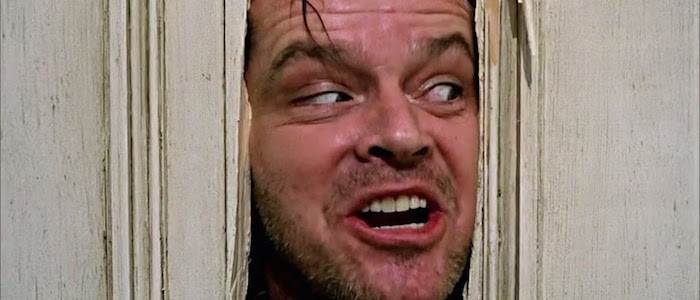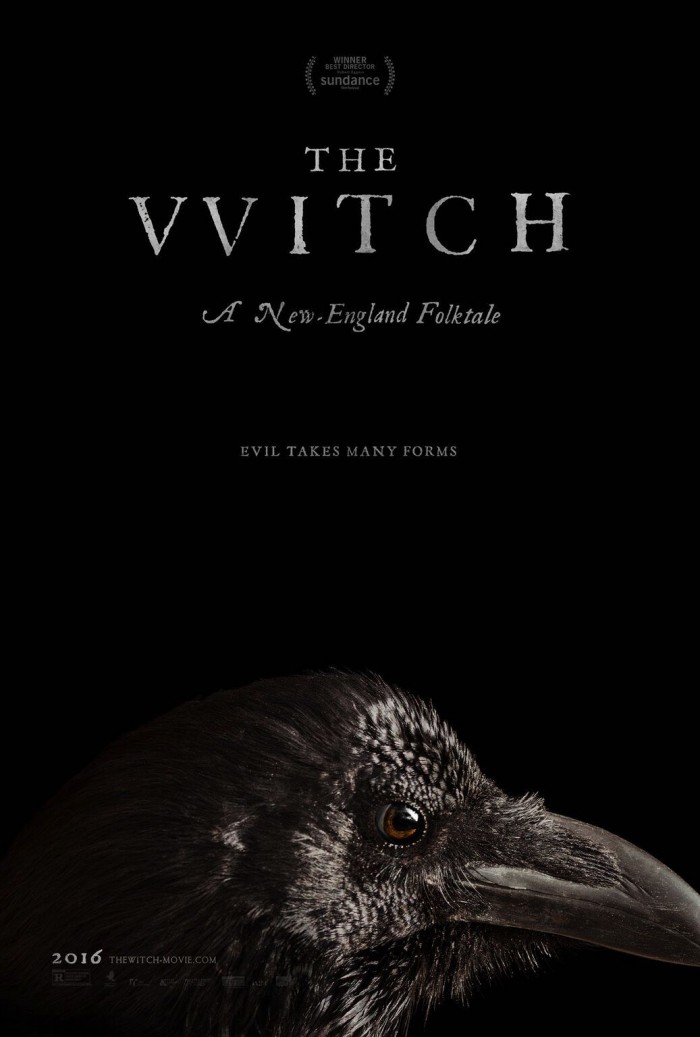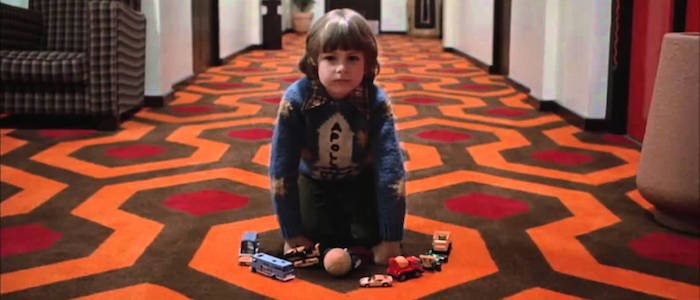The Influences Of 'The Witch' Part One: Director Robert Eggers On 'The Shining'
With The Witch opening this week, we sat down with writer/director Robert Eggers to do something a little different. We asked him to name the three films that most influenced his tremendous new horror movie and we would discuss his work through the lens of what inspired him. For part one of this three-part series, we talked about Stanley Kubrick's The Shining. Parts two and three, covering completely different films, will run tomorrow and the next day.
Released in 1980, Stanley Kubrick's The Shining has steadily overcome an initially mixed reaction to take its rightful place as one of the greatest horror movies ever made. Although based on the Stephen King novel of the same name, the film adaptation takes tremendous liberties with its source, resulting in something utterly unique and entirely unreal. It may not be King, but it is Kubrick all the way.
You can see the imprint of The Shining on so much modern horror, although the majority of its imitators mimic the visceral thrills of its final act without touching on the sense of dread the permeates the rest of the movie. The Shining works because it is a slow and steady descent into something truly terrible – the axe murders and the elevators full of blood and that final chase through the hedge maze work because we've been marinating in unease for two hours.
Although The Witch (which takes place in 17th century New England and follows a Puritan family that is besieged by a you-know-what) is ultimately a very different film, you can see how Kubrick's command of pacing influenced what Eggers did with his movie, how he plants seeds early on so they can blossom into something great and terrible later on. The Witch is the best kind of slow burn. You wait for the other shoe to drop without realizing that it already dropped in the first scene. It's a portrait of a catastrophe in slow motion: everyone is doomed from frame one and no one realizes it.
Both films have surface similarities – they're both chilly, cruel and relentless experiences. But they share a similar darkness at their cores. Each film is about a family whose personal inhibitions and wounds are dragged to the surface by a supernatural presence. There are monsters here, but the monsters lurk in the literal and figurative shadows. All they have to do is pull one block out of the tower and watch as everyone else tears it down themselves.
Both The Shining and The Witch are about the destruction of the family unit, with the dark forces gathered at the gates only providing a few gentle nudges to create despair and chaos. Although Eggers is quick to point out that both films set out to accomplish different goals, they both occupy the same tier of horror: smart, classy, ambitious, and meticulously constructed.
Our conversation with Eggers begins on the next page.
 Let's start with The Shining. There are a few similarities here. A few on the surface and a few that are a little buried. Both films are about families under assault by a supernatural threat that ultimately tears them apart. Was this similarity something you actively thought about while making The Witch or am I just jumping to conclusions here?
Let's start with The Shining. There are a few similarities here. A few on the surface and a few that are a little buried. Both films are about families under assault by a supernatural threat that ultimately tears them apart. Was this similarity something you actively thought about while making The Witch or am I just jumping to conclusions here?
It's a little bit of both. Honestly, my horror movie appreciation is a little weird. I like Hammer horror movies and I like the Universal stuff. That's the kind of stuff I could deal with as a kid because anything else was too scary. I look at it sort of nostalgically. I don't covet bad movies like a lot of people who are really into genre. I just don't care!
The Shining is one of the few classic horror movies that always scared me and really always worked. When I first started making films, short films, it was a film that I watched a lot and tried to dissect until it wasn't scary anymore. It took a lot of watchings to do do that. When I watch The Witch, sometimes I'm a little disgusted by how much of my film flagrantly reeks of The Shining. At the same time, I will admit that if it wasn't for that, I don't think the film would be working for people at all. [Laughs.]I'm happy you brought up Hammer. There are some direct connections between your film and much of the Hammer canon. The period setting and, I don't want to say "prestige," but the feeling that you're making an actual movie. There's a sense of class to some of the best Hammer stuff, usually brought about by actors like Christopher Lee and Peter Cushing. I think the same applies to The Witch.
Yeah, for sure.
On a few occasions when writing about your film, I've used the phrase "Kubrickian" to describe how it feels. That's a bit of a cliche, but both his work and yours feel meticulously planned. Your film feels researched and every aspect feels thought through. Kubrick was famous for having this intense development process that lasted years. You're working on a smaller scale here, but you obviously did a ton of homework.
It took four years to get the film financed, so I had ample time to research. There was a tremendous amount of research. I think that authenticity for authenticity's sake doesn't really please me necessarily. But because witches don't exist today, I felt it was essential to create an utterly believable 17th century world where witches really did exist so we could believe in them in the same way that someone in the early modern period would have believed in a witch. I was reading copious books, working with museums and historians. I was so prepared. I had done so much research and so many drawings. By the time we were actually crewed up, I did some field trips with the costume designer and the production designer to look at historical sights and this and that.
I had a really good understanding of what we were doing, so we could create a plan to do this on a tight budget. The clothing is all based on patterns from extant clothing, it's all hand-stitched, hand-woven. We had tons of swatches of what the authentic cloth would be and we found the best equivalents if we couldn't afford the real stuff. Everything that you see on the farm in camera is the correct materials, which often meant we had to use the period tools to make the stuff. We used power tools whenever we could, but if it had to look right and the only way to do it was with the period tools, that's what we did.
It's very satisfying to work like that. The whole crew is extremely united and everyone knows what this high bar is. Additionally, I had a lot of time with [Jarin Blaschke], the director of photography, to work out what this would be. We spent time in recreations of 17th century colonial hovels with light meters and candles and trying to figure out what this would actually be. The shots were incredibly planned. Much to the editor's despair, it was mostly shot cut in camera, just because we had so little time. The film is 91 minutes and the first assembly was 95 minutes. We just had to plan!
One of the most celebrated aspects of The Shining is how it takes place in a single hotel that grows increasingly surreal and unsettling. It's a place that doesn't make sense. The Witch is also a one-location movie, taking place in a farmhouse and the surrounding woods. Did you draw anything from The Shining when you created this setting?
Uh...no. [Laughs] What's really brilliant about The Shining that is the exact opposite of The Witch is that, for me, The Shining is sort of like using movie artifice to its advantage. It's using the difficulty of getting a naturalistic performance to its advantage. It's using the set-iness of the sets and the fact that everything is lit and that there are no shadows. It doesn't have a horror movie atmosphere in a traditional way. Everything is out there and it feels off. David Lynch learned a lot from that and utilizes that all the time in his performances. That off-ness.
I'm sort of not doing any of that. That's the genius of The Shining, which has nothing to do with this film. I'm more interested with The Witch in creating a credible atmosphere that you can smell, that is my childhood memory of the 17th century. My childhood nightmares of the 17th century. Which is different. I think the Shining is more creepy and more successful because of [Kubrick's] genius in that way.
Another similarity, whether intentional or not, is that both films are told from the point of view of a younger person in the family, the teenage daughter in your movie and Danny in The Shining. Both films have supernatural elements, but they're really about these kids watching their families fall apart around them.
It's interesting...I think that a lot of first time filmmakers make films about kids and stuff because we were kids not too long ago. The director of Partisan, Ariel Kleiman, said that in an interview recently and I think it's really true. For me, the worldview of the Puritans is so exotic and strange to contemporary people that it needed to be from the children's eyes in order to understand the world. We have Caleb, who has a better grasp of it, and Thomasin, who absolutely doesn't. When I was beginning to understand what this story was, I went into it starting with the kids for that reason and it ended up working out in a number of ways, including what you mentioned.
***
Our conversation will continue tomorrow as we dive into Häxan: Witchcraft Through the Ages.The Witch is in theaters February 19.

